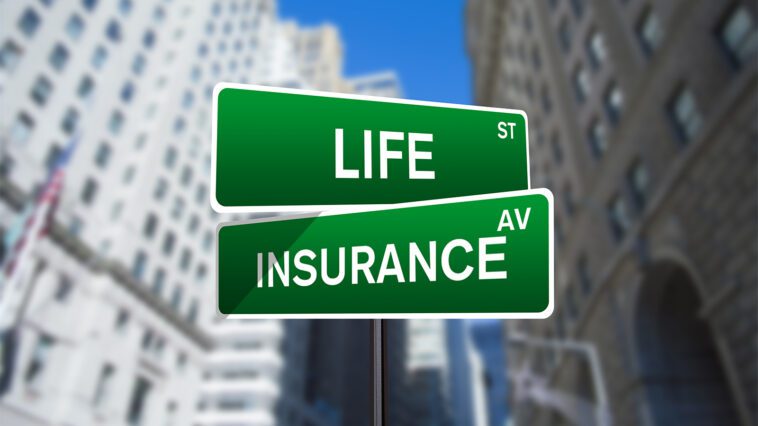Life insurance is a contract between an insurance company and a policy holder that promises to pay a designated beneficiary if the policy holder dies. The policy also pays out if the insured suffers a critical or terminal illness. Life insurance can be a useful tool in case of emergencies or as a means of financial security.
Factors that affect life insurance rates
If you are looking for life insurance, there are some factors that may affect your rate. If you have a criminal record, you may have to pay more than someone with a clean record. Certain hobbies and occupations may also result in higher rates. You may want to avoid extreme sports and dangerous hobbies. Your credit score may also play a role in your rate.
Pre-existing conditions are also a factor. Pre-existing conditions are a significant risk factor for life insurance premiums, since they make a person more likely to die during coverage. Therefore, it’s best to purchase your policy while you’re healthy to avoid paying a high premium. Though there are some guaranteed issue policies that allow people to apply for life insurance regardless of their health, most insurers will ask detailed questions about your health and may even require a physical. The more pre-existing conditions you have, the higher your premium will be.
Other factors that affect life insurance rates are the amount of coverage and the length of the policy. Policies that offer higher coverage amounts and longer terms tend to have higher rates. So it is important to understand what these factors are before purchasing your life insurance policy. This will ensure that you get the right amount of coverage.
Your height and weight can also affect your rate. These two factors influence your chances of developing health problems, including cancer. However, insurers have become more lenient with their height and weight requirements in recent years. They generally look for a BMI of 20-25 for a preferred or super-preferred rate. Other factors that may affect your premium include your family history of cancer and heart disease.
Variable and universal life insurance
Variable and universal life insurance policies offer a flexible premium, death benefit, and cash value component. The cash value in a VUL policy can grow at a faster pace than in a traditional life insurance policy. These policies can help you meet your investment goals by allowing you to customize premiums, death benefits, and the amount of coverage you receive.
The cash value in a variable life insurance policy can be used to pay premiums, but only for a limited period. This is only useful if the cash value is small and interest rates are low. With a variable life insurance policy, it’s important to monitor the cash value regularly because it can decrease and reduce the amount of coverage. However, if the cash value grows to a large level, the policy holder can continue coverage for years without making additional payments.
Variable life insurance policies can provide higher returns than whole life policies, but they can also expose policyholders to higher risk. The money invested in these policies is placed into sub-accounts, similar to those in mutual funds. Since the value of the sub-accounts can rise much faster than in a universal or whole life policy, some insurers cap the amount of growth in these policies.
Variable universal life insurance offers greater flexibility than a traditional whole life policy, and it also allows policyholders to invest the cash value in stocks, indexes, and money markets. The cash value of variable universal life insurance policies increases or decreases depending on the performance of the assets the insurer invests in. This type of life insurance also has a guaranteed minimum death benefit. The cash value in a variable universal life insurance policy may be tax-deferred, which gives policyholders more flexibility.
Cash value life insurance
Cash value life insurance is a financial instrument that allows you to accumulate a death benefit. The death benefit varies according to the type of policy. The most common type of cash value life insurance is a universal life insurance policy. These policies tend to build up more cash value than traditional life insurance policies, but some of them come with greater risks.
One of the best features of cash value life insurance is the ability to borrow against it. You can use this money to pay off your mortgage early, pay college tuition, or even take a vacation. However, you must be aware that the death benefit will be reduced by the amount of the loan and fees. For example, if Jeremy had a $500k cash value life insurance policy and took a loan against it, his beneficiary would receive his death benefit minus the loan amount.
Another option is whole life insurance, also known as straight life or ordinary life insurance. You pay a certain amount of premium each month for this type of life insurance. The insurance company sets a certain rate of interest that will help your cash value grow over time. You can also opt for a policy that allows you to pay off your premiums in several years instead of all at once.
Cash value life insurance policies can offer many tax advantages, including tax-deferred growth. This type of insurance can also help supplement your retirement income. In addition, the cash value grows tax-deferred, so you’ll never have to pay taxes on the money until you withdraw it. There are also some limitations, including a limit to the number of draws you can make in a calendar year or term, or a minimum withdrawal amount.
Term life insurance
Term life insurance pays a death benefit to the beneficiary when the policy holder dies. This death benefit is tax-free. The term of a term life policy is usually 10 to 30 years. The owner pays premiums for this type of policy for a fixed period of time, and the insurance company promises to pay the death benefit to the beneficiary upon the owner’s death.
Term life insurance is very affordable for the initial years of the policy. Most employers offer group life insurance. The cost is usually based on the age and health of the policyholder. When deciding on a term life policy, it’s important to determine how much protection you need, and for how long. Most financial planners recommend ten to fifteen times your current income.
Term life insurance is usually cheaper than whole life insurance, especially for young adults. Moreover, many term life policies allow the policyholder to convert the policy into permanent coverage, although this depends on the policy. This can save you money for investments or a higher premium. The downside of a term policy is that if you fail to make your premium payments, you can forfeit your coverage.
Term life insurance is the most affordable type of life insurance. It covers the insured for a specified period, usually ten, fifteen, or twenty years. During that time, the insured pays premiums and the insurer will pay the death benefit to the beneficiary. This type of policy is ideal for people who want to protect their families in the unlikely event of an early death.
You can also convert a term policy into a permanent policy by adding a conversion rider. You can apply several months or a year before the term ends to convert the policy into permanent coverage. However, you must have a policy with a conversion rider. Some companies do not allow conversions of term policies. Check your policy documents and speak with your insurance agent if you’re unsure about the conversion process.
Whole life insurance
Whole life insurance is a type of life assurance that guarantees that the policy will remain in force for the entire duration of the insured’s life. This type of insurance is also referred to as whole of life assurance, straight life, or ordinary life. This type of insurance will last as long as the insured lives, or until the policy reaches maturity, whichever comes first.
Depending on the policy, part of your premium payments may accumulate into a cash value account. The cash value can grow tax-deferred. You can access this cash value through a policy loan, withdrawal, or surrender. If you don’t repay the loan, you may reduce the cash value of the policy, which will reduce the death benefit to your beneficiaries.
When choosing a whole life insurance policy, choose a company that has a solid financial history. Financial strength ratings are available from independent sources, and the insurance professional will be able to advise you as to which one is the best for your situation. There are many different types of whole life insurance, and the right choice depends on your needs.
Whole life insurance can help you protect your family and your business. It can also leave a legacy to your family or your favorite charity. When properly set up, this type of insurance provides a guaranteed cash value that can be used for any purpose, including paying off debts, providing income for retirement, or supporting a business. A financial professional will ask you questions to determine what your goals are for the policy.
Whole life insurance premiums are tax-free, which means that you can access the money in the cash value in case of an emergency. You can also access your cash value at a later date through partial withdrawal or post-retirement. The cash value will probably be in a lower tax bracket by then.



